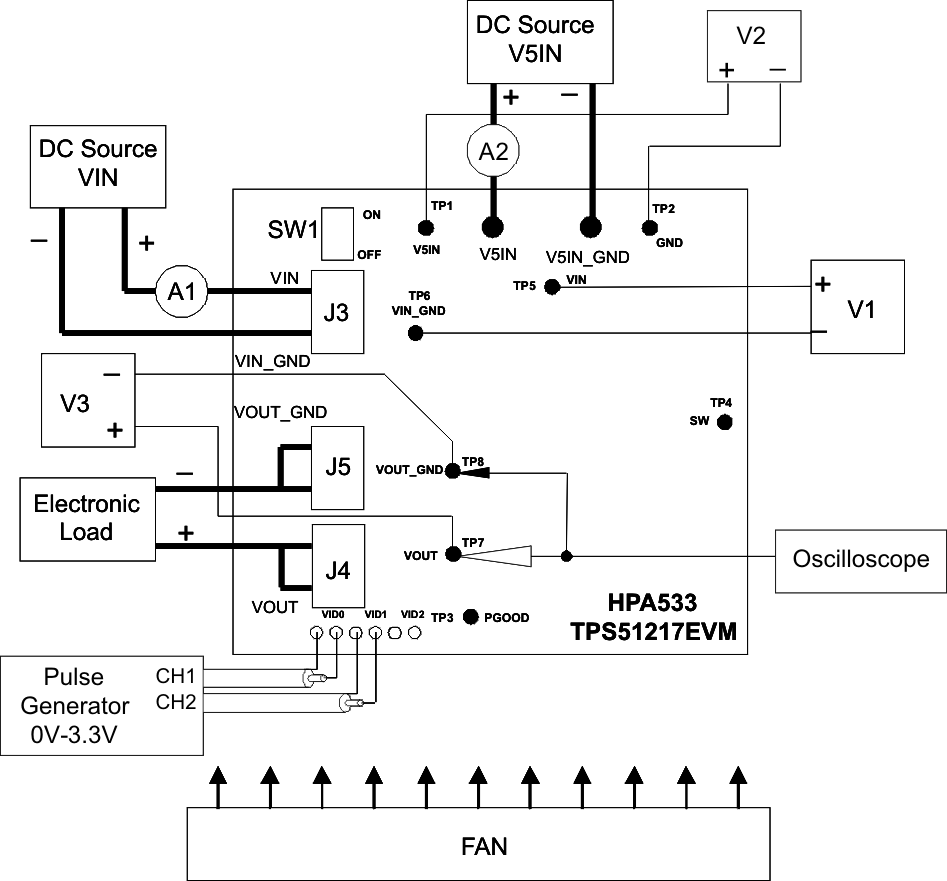SLUU420A May 2010 – February 2022 TPS51217
4.2 Recommended Test Setup
 Figure 4-2 Recommended Test
Setup
Figure 4-2 Recommended Test
SetupFigure 4-2 shows the recommended test setup to evaluate the TPS51217EVM. Working at an ESD workstation, make sure that any wrist straps, bootstraps, or mats are connected, referencing the user to earth ground before power is applied to the EVM.